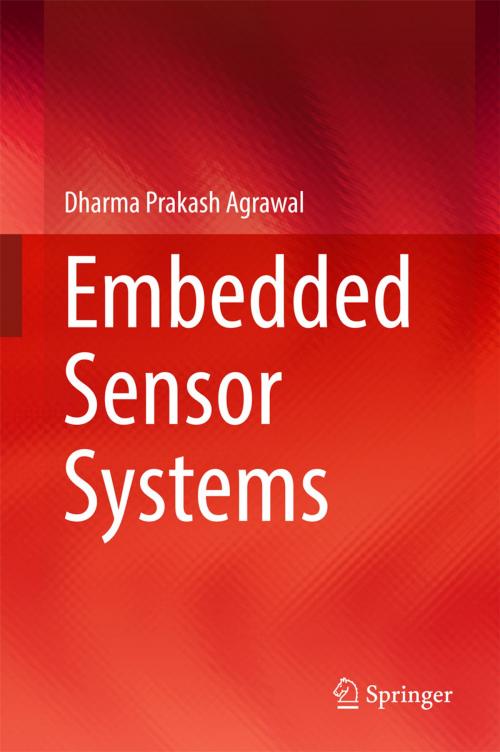Embedded Sensor Systems
Nonfiction, Science & Nature, Technology, Electronics, Circuits, Computers, Computer Hardware, Input-Output Equipment| Author: | Dharma Prakash Agrawal | ISBN: | 9789811030383 |
| Publisher: | Springer Singapore | Publication: | February 4, 2017 |
| Imprint: | Springer | Language: | English |
| Author: | Dharma Prakash Agrawal |
| ISBN: | 9789811030383 |
| Publisher: | Springer Singapore |
| Publication: | February 4, 2017 |
| Imprint: | Springer |
| Language: | English |
This inspiring textbook provides an essential introduction to wireless technologies for sensors, explores the potential use of sensors for numerous applications, and utilizes probability theory and mathematical methods as a means of embedding sensors in system design.
The book discusses the need for synchronization and underlying limitations, the interrelation between given coverage and connectivity to the number of sensors needed, and the use of geometrical distance to determine the location of the base station for data collection, while also exploring the use of anchor nodes to determine the relative positions of sensors. The book addresses energy conservation, communication using TCP, the need for clustering and data aggregation, and residual energy determination and energy harvesting, together with key topics in sensor communication like mobile base stations and relay nodes, delay-tolerant sensor networks, and remote sensing and potential applications. The book defines routing methods and performance evaluation for random and regular sensor topology and covers sensor-based intrusion detection.
The book focuses on applications such as interaction with actuators, final design with respect to a given application, personal and body-area networks for health-care applications and sensor networks as an integral component of the IoT. The importance of both coverage and connectivity is examined thoroughly in both randomly deployed sensor networks for defense applications and regularly placed sensors for an industrial setup.
The content includes exercises as well as design-based project concepts. The book’s comprehensive coverage makes it well suited for use as a textbook for graduate and upper undergraduate courses, or as course material for professional courses.
This inspiring textbook provides an essential introduction to wireless technologies for sensors, explores the potential use of sensors for numerous applications, and utilizes probability theory and mathematical methods as a means of embedding sensors in system design.
The book discusses the need for synchronization and underlying limitations, the interrelation between given coverage and connectivity to the number of sensors needed, and the use of geometrical distance to determine the location of the base station for data collection, while also exploring the use of anchor nodes to determine the relative positions of sensors. The book addresses energy conservation, communication using TCP, the need for clustering and data aggregation, and residual energy determination and energy harvesting, together with key topics in sensor communication like mobile base stations and relay nodes, delay-tolerant sensor networks, and remote sensing and potential applications. The book defines routing methods and performance evaluation for random and regular sensor topology and covers sensor-based intrusion detection.
The book focuses on applications such as interaction with actuators, final design with respect to a given application, personal and body-area networks for health-care applications and sensor networks as an integral component of the IoT. The importance of both coverage and connectivity is examined thoroughly in both randomly deployed sensor networks for defense applications and regularly placed sensors for an industrial setup.
The content includes exercises as well as design-based project concepts. The book’s comprehensive coverage makes it well suited for use as a textbook for graduate and upper undergraduate courses, or as course material for professional courses.















